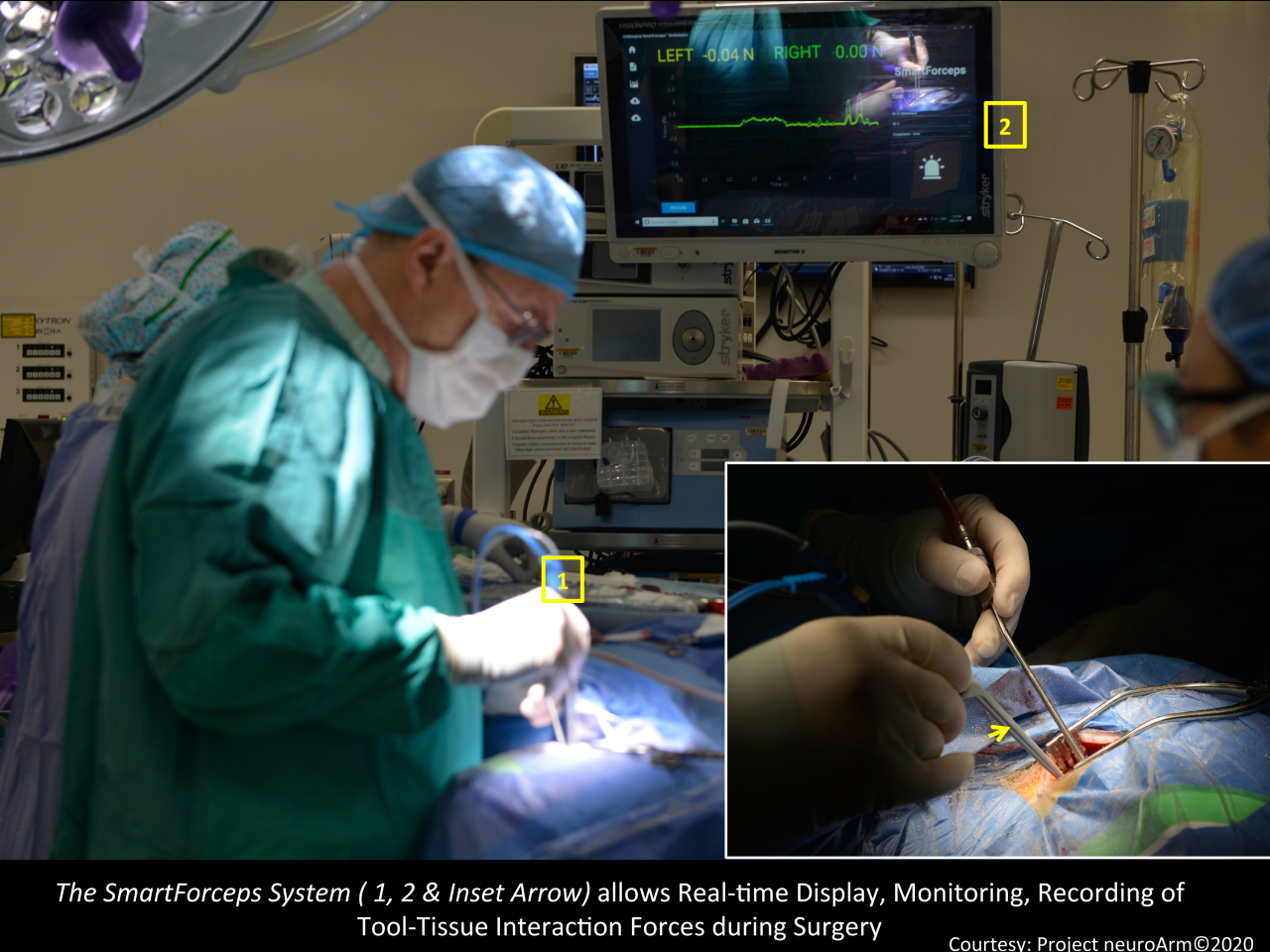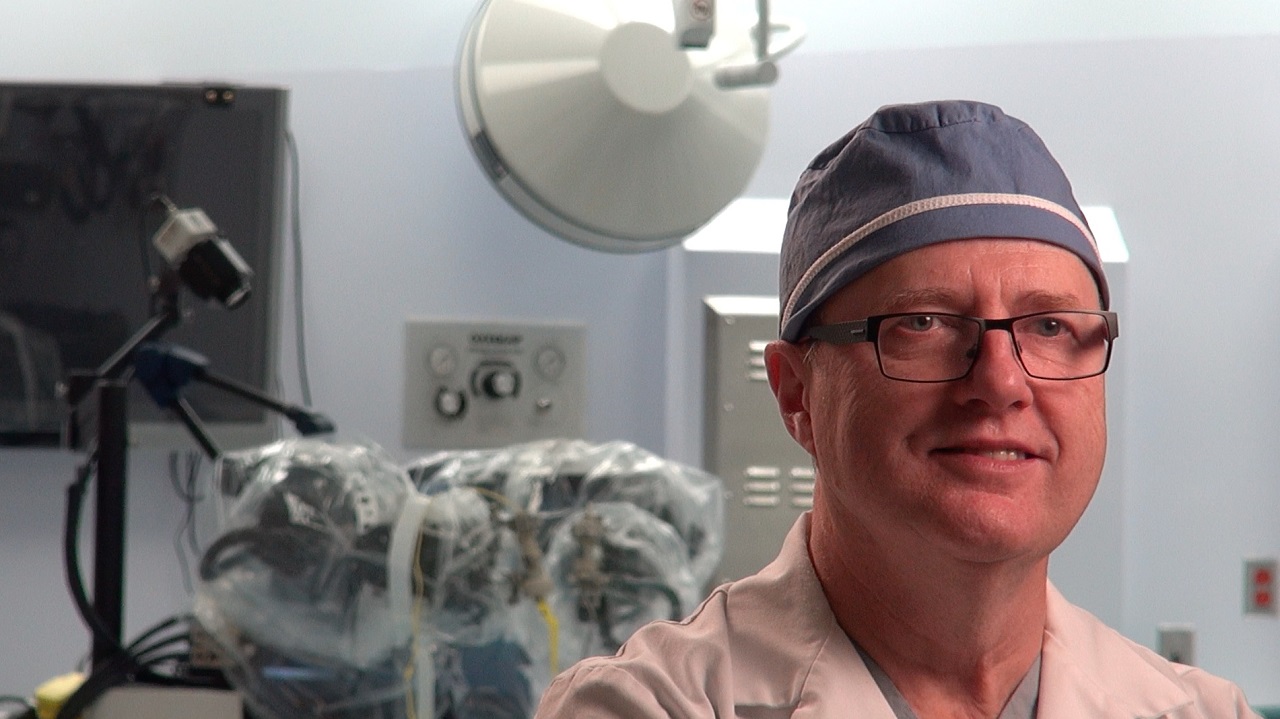neuroARM
23 August 2021

The team at Project neuroArm-University of Calgary, led by Dr. Garnette Sutherland, is advancing the field of telerobotics for microsurgery-stereotaxy, whereby image-guidance, sensory input, and precision controls re-create the sight, sound, and touch of surgery at a sensory-immersive remote workstation. “Autonomous robotics would be the natural next step and would take full advantage of technological progress to improve the safety of surgery”, says Dr. Sutherland. Especially relevant in the current climate is the ability for contactless deployment during pandemic situations or other hazardous environments, be either natural or human-made.
Building upon the prior success of the neuroArm robot that is currently operational at Foothills Hospital, Calgary, the ASI team is now completing neuroArmPLUS, the next generation system – a compact, intelligent and agile robot suited for whole body application. Equipped with state-of-the-art system design and the latest sensory input features including haptics, vision, and acoustics, a built-in reactive software interface with high level machine intelligence adds an element of semi-autonomy with expert surgeon in the loop. Since a procedure-specific toolset is key for applications beyond brain surgery, this multi-purpose dextrous system drives a whole new level of innovation in the smart robotic toolset. Autonomous analytics and continuous feedback loops using artificial intelligence principles create a data-rich environment, further enhancing robotic performance to catalogue procedural best practices. Similar to the aerospace industry, this technology thereby standardizes surgical procedures and training towards increased safety.
The neuroArmPLUS will provide wide-ranging benefits to patients around the world through increased safety and standardized care paradigms. In addition, ongoing research and development supports surgical trainees and aspiring academicians who will have greater access to data, information, and learning modules available through smartphone apps and publications including social media.
The future vision focuses on sustainability through product development, global adoption, and spin-off companies for smart medical devices underpinned by robotics and machine intelligence. “This is an exciting development for Alberta,” adds Dr. Sanju Lama, a key team member who leads clinical translation and uptake. “We are working with important local, national and international bodies and industrial partners, including MDA, IMRIS-Deerfield, Stryker, Medtronic, Bissinger GmbH, Canadian Circuits, Improving, Sullivan Machine Works, and OrbSurgical Ltd., to bring economic benefits, international visibility and a competitive edge to the province.”
The team is aiming to complete work by 2021 with future developments currently in planning.

In addition to Garnette Sutherland, MD, Professor of Neurosurgery, and Sanju Lama, MD, PhD, Clinical Integration/Regulatory Framework, this multi-disciplinary team includes Hamidreza Hoshyarmanesh, PhD, Chief Engineer - Mechatronics, Amir Baghdadi, PhD, Post-doctoral Associate, AI and Data Science, Fangwei Yang, MD, Robot Technician, Mohammadsaleh Razmi M.Sc Electrical Engineer, Kazi Ishfaq Ahmed, M.Sc. Electrical Engineer, Mojtaba Esfandiari, PhD Student (Snake-like Continuum Robotics for brain surgery) and Rahul Singh, Expert - Data Science and AI.